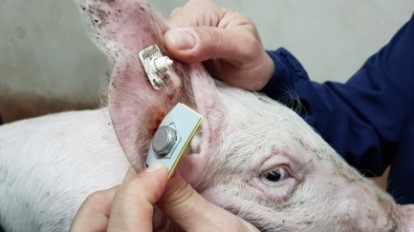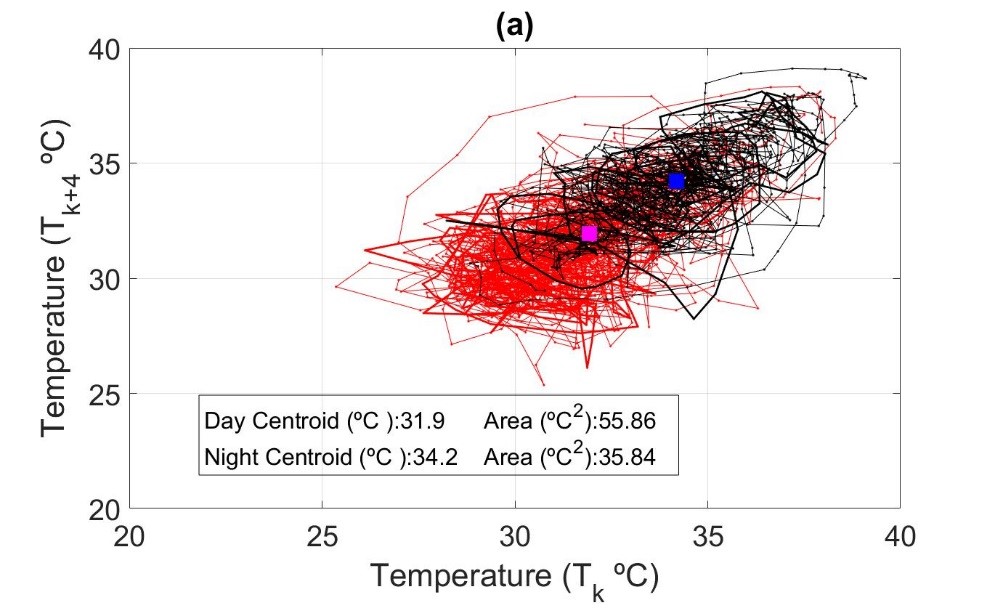In the framework of precision farming sometimes we may forget that in our farms there are other “neighbors” that can also use modern technologies. Livestock farming is very present in high-tech farms worldwide, and in this article we present an application of advanced sensors and wireless communications to monitor pig heat to track animal welfare.
The skin temperature of mammals can be an indicator of health status as well as a proxy measure for thermoregulatory effort or energy wastage, being directly affected the feed efficiency of the animal, which is one of the most important determinants of animal productivity: “Animals with a higher deep body temperature will use more energy to produce metabolic heat, at the expense of productivity”.
Nowadays, it is possible to continuously record temperatures of livestock over protracted periods being necessary the use of new data analysis methodologies, in order to provide real time information to farmers to help them make decisions about how to control the thermal environment.
Within this framework, the LPF_Tagralia research group at Universidad Politécnica de Madrid is conducting several studies focused on the pig’s ear skin temperature supervision during fattening periods (Figure 1). The use of electronic feeding station during the supervision allowed knowing information regarding the date, time and amount of feed consumed per individual animals. All of this data are being used as a starting point to differentiate animals based on phenotype, as would be the case of the use of a possible physical locomotor indicator based on the number of visits to the feeding station.

Figure 1. Detail of the Temperature sensor fastened to the ID tag of the animal.
The application of different data analysis methodologies to study the time series of ear skin temperature highlighted the variability among animals and periods of day and night (Figure 2). Similarly, it have been demonstrated a high correlation between the skin temperatures and the feed efficiency (r = 0.85), as well as with the physical locomotor activity (r = 0.53).

Figure 2. Phase space representation separated by day (in red) and night (in black) of one monitored pig.
A high frequency individualized non-invasive monitoring of the ear skin temperature could be used to help categorize pigs in terms of feed efficiency for rapid phenotyping, improving farm management techniques and therefore its productivity.
Requejo, J. M.;Garrido-Izard, M.;Correa, E. C.;Villarroel, M.; & Diezma, B. (2018). Pig ear skin temperature and feed efficiency: Using the phase space to estimate thermoregulatory effort. Biosystems Engineering, 174, 80-88. https://doi.org/10.1016/j.biosystemseng.2018.06.020

